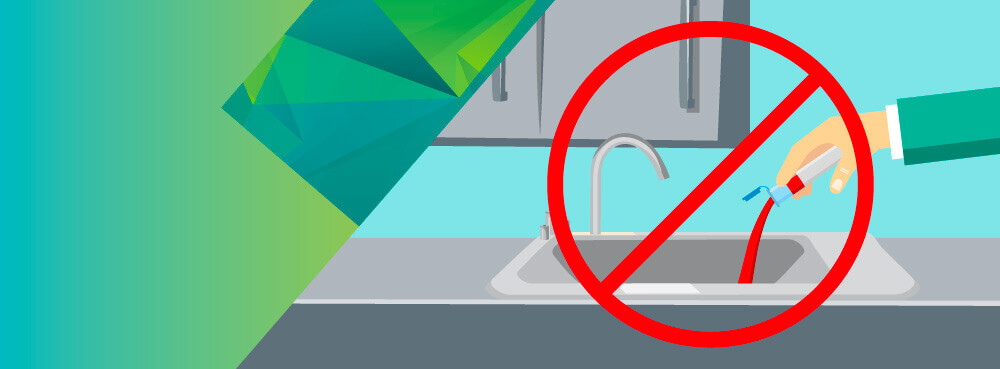Just How Fluid Garbage Disposal Functions: A Thorough Review of Strategies and Technologies Employed

Introduction of Fluid Waste Types
The complexity of liquid waste types necessitates an extensive understanding of their attributes and effects for disposal. Liquid waste can broadly be categorized into a number of kinds, including commercial, community, farming, and contaminated materials. Each category displays distinct residential or commercial properties, calling for details administration strategies to alleviate environmental and health threats.
Industrial liquid waste originates from manufacturing procedures and typically contains a variety of impurities, such as hefty steels, solvents, and organic compounds. Metropolitan fluid waste, largely comprising wastewater from households and business facilities, includes raw material, nutrients, and virus (industrial wastewater treatment). Agricultural liquid waste, including runoff from farms, may consist of plant foods, chemicals, and animal waste, presenting dangers to water quality and ecosystems
Unsafe fluid waste is characterized by its toxicity, sensitivity, or possible to cause damage. Comprehending these varied liquid waste types is vital for creating effective disposal techniques and making sure conformity with ecological regulations.
Physical Treatment Techniques

Testing is the first step, where larger fragments and debris are gotten rid of from the liquid waste using displays or grates. In sedimentation storage tanks, heavier particles resolve at the bottom, forming a sludge layer, while the made clear liquid can be further dealt with.
Filtering is another essential approach that includes passing the fluid with porous products, such as sand or membranes, to record smaller fragments. This step enhances the top quality of the liquid, making it ideal for subsequent therapy procedures.

Chemical Treatment Strategies
Chemical treatment strategies are vital for effectively taking care of liquid waste, particularly in resolving dissolved and colloidal impurities that physical techniques may not appropriately get rid of. These methods utilize different chemical agents to counteract, speed up, or transform hazardous materials into less unsafe forms.
One typical method is coagulation and flocculation, where chemicals such as alum or ferric chloride are included in promote the gathering of put on hold bits. This procedure enhances sedimentation, enabling much easier removal of the resulting sludge. Additionally, oxidation processes, utilizing representatives like chlorine or ozone, are used to break down complex organic compounds and virus, making the waste safer for discharge or more treatment.
Neutralization is one more critical technique, which adjusts the pH of acidic or alkaline waste streams to neutral levels, stopping possible injury to downstream systems and the environment. Furthermore, advanced oxidation processes (AOPs) utilize combinations of oxidants and ultraviolet light to deteriorate consistent contaminants, achieving More Help a higher level of treatment efficiency.
Biological Treatment Procedures
Organic therapy procedures play a crucial role in the management of liquid waste by utilizing microorganisms to decompose organic issue and lower impurity degrees. These procedures can be extensively categorized into anaerobic and aerobic treatments, each employing details microbial areas to attain efficient waste deterioration.
Cardiovascular treatment involves the use of oxygen to facilitate the failure of natural products by germs. This process is commonly applied in turned on sludge systems, where oygenation storage tanks provide a helpful atmosphere for microbial growth, leading to the oxidation of natural contaminants. The resultant biomass can be separated from dealt with effluent with sedimentation.
On the other hand, anaerobic therapy happens in the lack of oxygen, relying upon different microorganisms to break down organic issue. This technique is particularly helpful for high-strength waste, as it produces biogas, a renewable resource source, while minimizing sludge production. Technologies such as anaerobic digesters are regularly utilized useful content in commercial and local applications.
Both anaerobic and cardio biological treatments not only lessen the ecological effect of liquid waste however also assist in resource recuperation, making them necessary components of lasting waste management methods. Their adaptability, effectiveness, and efficiency sustain their widespread application throughout numerous industries.
Arising Technologies in Disposal
Cutting-edge approaches to liquid waste disposal are quickly advancing, driven by developments in innovation and an increasing emphasis on sustainability. Among these emerging innovations, membrane layer bioreactors (MBRs) have actually obtained grip for their ability to combine biological treatment with membrane filtering, leading to premium effluent that can be recycled in numerous applications. MBRs make it possible for smaller sized impacts and extra efficient procedures contrasted to traditional systems.
Another promising development is the use of anaerobic digestion incorporated with nutrient recuperation technologies, which not just deals with fluid waste however likewise produces biogas and recuperates important nutrients like nitrogen and phosphorus. This dual benefit enhances source performance and lowers ecological effect.
Furthermore, advanced oxidation procedures (AOPs) are being embraced for the deterioration of complicated organic pollutants. These approaches use powerful oxidants and drivers to break down contaminants at the molecular degree, using an extremely effective solution for tough waste streams.
Additionally, the combination of synthetic intelligence and equipment Get More Information discovering in waste administration systems is optimizing functional effectiveness and predictive upkeep, resulting in reduced prices and enhanced ecological conformity. These technologies mirror a considerable shift in the direction of more lasting and efficient liquid garbage disposal practices.
Verdict
In conclusion, effective liquid waste disposal demands a thorough understanding of various methods and innovations. By continually advancing these approaches, it ends up being feasible to resolve the expanding challenges associated with liquid waste, eventually adding to ecological defense and source recuperation.
Fluid waste disposal is a crucial element of environmental administration, needing a detailed understanding of numerous strategies and modern technologies customized to various waste kinds. Fluid waste can extensively be categorized into a number of types, including industrial, community, agricultural, and hazardous waste. Agricultural liquid waste, including runoff from ranches, might have plant foods, chemicals, and animal waste, positioning risks to water quality and communities.
Different physical treatment methods play a critical function in handling liquid waste effectively - industrial wastewater treatment.In conclusion, reliable liquid waste disposal necessitates a comprehensive understanding of numerous strategies and technologies